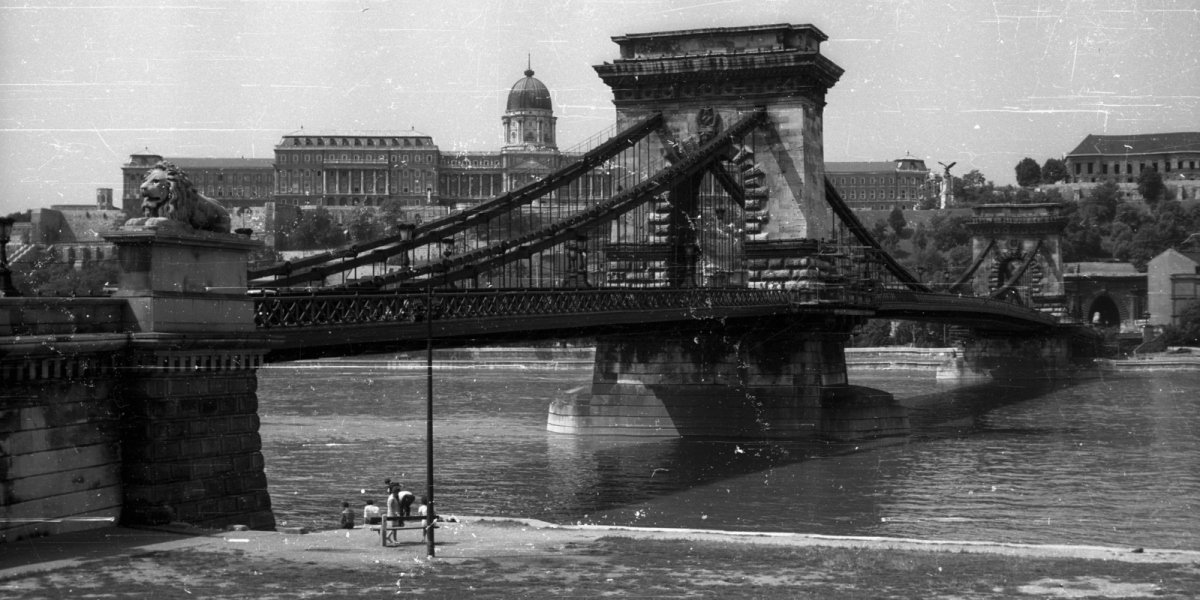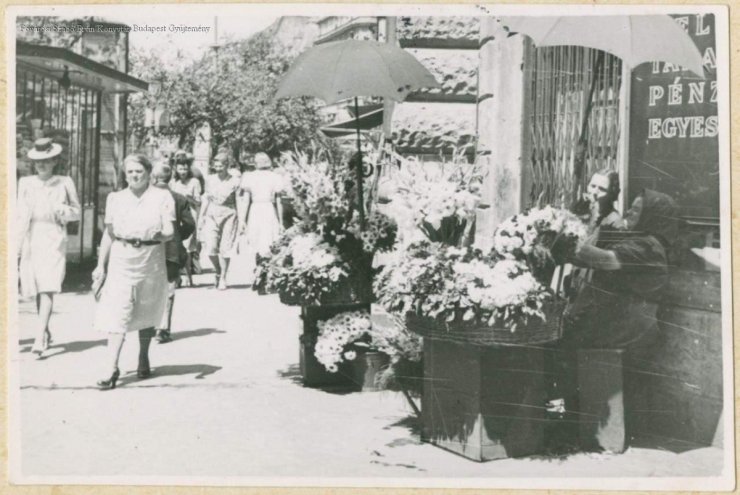The Chain Bridge was blown up by the Germans at the end of World War II, and it took nearly five years to be rebuilt before it could be used again: it was opened to traffic on 20 November 1949. Some of the old parts were used during the renovation, including those that were recovered from the depths of the Danube. 75 per cent of the chains were reused, the other parts, a quarter of the chains, the bracing support, the cross and longitudinal supports, as well as the railings, were made anew.
After the handover in 1949, the bridge was not cared for for a long time, but by the end of the 1960s, it was time again for a thorough renovation. The Liberty Bridge was the first in the works of the Budapest bridge renovation program, which started in 1965. The General Directorate of Public Works and Civil Engineering of the Executive Committee of the Budapest Socialist Council started planning the reconstruction of the Chain Bridge in 1969, and first, they assessed the necessary tasks.
.jpg)
The worn bridge. The 1949 coat of arms on the pylons (Photo: Fortepan/No.: 441)
What had to be rebuilt and renovated on a structure that was actually 20 years old at the time? On the one hand, the bridge was built rather hastily between 1947 and 1949, so much war damage, mainly on the stone parts, was not repaired, especially where the damage did not hinder the everyday use of the bridge. During the preparation, these defects were assessed, and the opinion of the National Monument Inspectorate was also sought, which stipulated that no repairs could be applied, the colour of which would differ from the old one. Since the apartments in Budapest were mostly heated with coal and wood at that time, soot was thickly deposited on all buildings and structures, including the Chain Bridge, so various surfaces, gates and stone lions had to be cleaned.
In addition, significant corrosion problems had already appeared on the metal parts by then, which had to be dealt with somehow. Not only did the old paint have to be removed from the 73,000-square-metre surface, but the corrosion also had to be removed, and then the bridge had to be repainted, which was a difficult task because not only was the surface huge, but the distance between the individual chain plates was less than 3 centimetres.
By the end of the 1960s, many rivets had come loose on the bridge. Although welding was already used during the reconstruction of the Chain Bridge, many of its parts were still riveted. This procedure meant that the metal sheets to be joined were drilled through, a hot steel rod was inserted into the hole, both ends of which were hammered, mostly into a hemispherical shape. This alone holds the plates together, but the cooling metal shrinks, so this connection becomes very solid. Of course, over time, due to vibrations and movements, these rivets can loosen, so they must be replaced.

The renovation looked significant, but it actually included surface repairs and painting (Photo: Fortepan/No.: 138947)

The closed Chain Bridge in 1973 (Photo: Fortepan/No.: 138944)
It had already been decided that the Rákosi coat of arms, installed in 1949, would be replaced by the current one of the People's Republic in 1973, and the specialists also had to work on the decorative lighting.
The renovation of the bridge was originally supposed to begin in 1971, but the investment was delayed, first, it was postponed to 1972, and then it was classified as one of the centenary investments planned for 1973, the 100th anniversary of the unification of Budapest. The tunnel could not be used since January but the complete closure of the Chain Bridge took place only on 15 February 1973. The 14 February 1973 issue of Magyar Hírlap wrote the following about the traffic changes:
"Traffic on the Chain Bridge will stop tomorrow, 15 February because, as you know, the bridge is being renovated. The completion of the renovation of the bridge is planned for 15 July. Road traffic will be diverted during the bridge closure period. As we reported earlier, the Danube Promenade will be opened. According to this, it will be possible to reach Erzsébet Bridge and Buda from Roosevelt Square along the Danube Promenade with one-way traffic, while Roosevelt Square can be reached from Buda via the one-way Apáczai Csere János Street. It was said at the General Directorate for Transport of the Budapest Socialist Council that to handle the expected heavy traffic, new traffic lights will be installed at the major intersections of the diversion routes, which will be adapted to the otherwise modified program of the existing light system."

73,000 square metres of steel surface had to be inspected (Photo Fortepan/No.: 138951)
The route of bus 4 was changed, which was divided into two sections, 4A from Buda to Pest and back, while 4B ran on the Pest side, the two routes met at Roosevelt Square (today's Széchenyi Square). Of course, those travelling to Buda did not cross the Chain Bridge, but rather the Erzsébet Bridge. Bus 104 also ran parallel to it, also via the Erzsébet Bridge.
The closure of the Chain Bridge was planned for five months, and they were able to stick to this plan, the bridge was opened to traffic on 15 July 1973. Later on, Pestbuda will present exactly what was done and with what results.
Cover photo: The Chain Bridge in 1972 (Photo Fortepan/No.: 128915)



































Hozzászólások
Log in or register to comment!
Login Registration